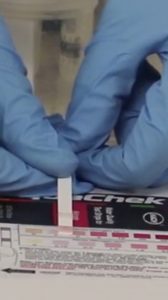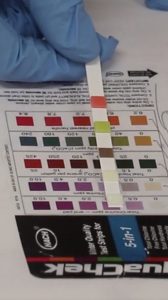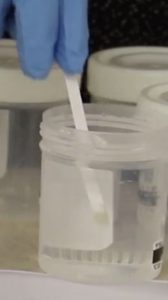
Civil engineering faculty members Grace Rushing (left), Matteo D’Alessio and Tiffany Gray run citizen science activities focused on water quality. Photo by Lou Tyson
Necessity truly may be the source of invention.
Faced with the challenge of conducting lab experiments while observing COVID-19 safety protocols, three University of Mississippi civil engineering faculty collaborated to bring together nearly 100 students from their courses to work on a unique research project last fall.
Assistant professor Matteo D’Alessio and instructors Grace Rushing and Tiffany Gray conducted the project titled “Using citizen science to conduct water quality laboratory activities during a pandemic event.” Their article, “Monitoring water quality through citizen science while teaching STEM undergraduate courses during a global pandemic,” has been accepted for publication by the journal Science of the Total Environment.
Eighty-nine students across four classes (C E 101: Introduction to Civil Engineering I, Engr 100: Introduction to Engineering, C E 405: Civil Engineering Lab III, and Engr 598, Section 29: Water and Wastewater Treatment) participated in the project.
The students received kits that contained sampling containers, three sets of water quality test strips, premade quality assurance and control, or QA/QC, samples, and instructions. Students also attended a live lecture on the topic and watched videos detailing the procedures.
“When COVID-19 disrupted classes and labs in spring 2020, we realized that there would be a need to have hands-on lab activities that could be implemented by students remotely while the disruption continued,” Rushing said.
“We were able to test the viability of the approach, based on the concept of citizen science, in the summer 2020 STEM virtual camps organized by the Department of Outreach. Once we saw that the approach worked on a small scale, we applied for and received a seed grant from the Disaster Resilience Flagship Constellation, which funded the project.”
The students were charged first with checking the accuracy of the test strips by comparing the results when testing the QA/QC samples, which had known amounts of analytes, Rushing said.
“The second task was for students to collect two samples from tap, surface or groundwater sources and analyze the water quality of their samples based on the results from the test strips,” she said. “The location and type of sample was up to the students, and this resulted in a wide range of water samples primarily from the Oxford-Lafayette area.”
The instructors evaluated students’ responses to questionnaires about the experience and received positive feedback about this method of learning.
“I enjoyed this experiment and hope to have more,” wrote one student. “This activity was fun because we did something that wasn’t just computer work.”
Another student wrote, “This experiment was interesting because it was something different. New experiences are always welcome.”
Students were also able to gain more knowledge and awareness related to water quality in their community.
“This experiment was fun and very interesting to let me have a better knowledge about the water that is around me in Oxford,” wrote one student. “For me, this experiment was one of the first where I had to collect samples and conduct an analysis of the samples completely from scratch.”

The third step of the research is the quantification of nitrate and nitrite using the 2:1 test strips.

The fourth step of the research is the quantification of free chlorine, total chlorine, total hardness, total alkalinity and pH using the 5:1 test strips.
Gray said the students generally did a great job presenting their results to the judges virtually, which can be more challenging than traditional in-person presentations.
“There were some outstanding presentations from the freshmen and seniors with very in-depth data analysis and discussion of results,” she said. “Overall, the students exceeded expectations, especially considering the constraints imposed by the remote learning environment.”
Based on the success of this project, plans are underway to incorporate it as a final project in future introductory civil engineering courses as well as include it as a lab in C E 405.
“Additionally, we have reached out to several local school districts and are currently working with them to deliver a version of these kits to high school students who are learning remotely,” D’Alessio said.

